Description, nature, feeding and breeding of cats Japanese Bobtail

Cats are rightfully considered the most beloved pets that people prefer to have in their homes. Today there are a huge number of breeds of such animals, many of which attract increased attention due to their exotic appearance. Cats of the Japanese Bobtail breed are just such pets, in the light of which they are in demand among breeders around the world.
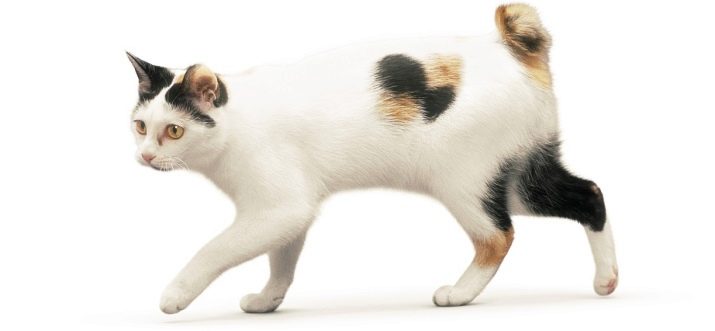
Description
Animals are famous for their centuries-old history, since their images are found on fragments of rock art, which dates back to the first century of our era. Bobtails in their homeland are an object of admiration and adoration, because the Japanese believe that the animal is capable of bringing good luck and success to its owner.
All over the world, the tailless breed is classified as an elite pet.

The homeland of cats with a pom-pom tail is considered to be East Asia, from where the breed gradually spread throughout the world. According to Asian beliefs, a negative force was enclosed in the tail of the animal, and in order for the animals to become harmless, this source of evil was simply cut off from them.
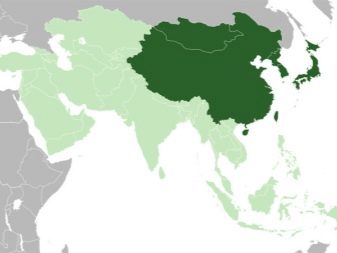

Outwardly, cats of the Japanese Bobtail breed do not stand out for their impressive size. Animals have an average non-muscular physique, individuals are not inclined to gain too much weight, therefore they do not suffer from obesity and obesity. The main feature of the breed is the tail, which also consists of a standard number of vertebrae, but only of a smaller size. The vertebrae in the tail are able to bend, therefore, visually, the tail is located on the back of the animal.
The length of the tail of bobtails in a straightened state does not exceed 15 centimeters, in the usual curved form it will be half of this length. It may seem to an ordinary layman that the tail is chopped off, since the bends of the vertebrae can be felt only when palpating.
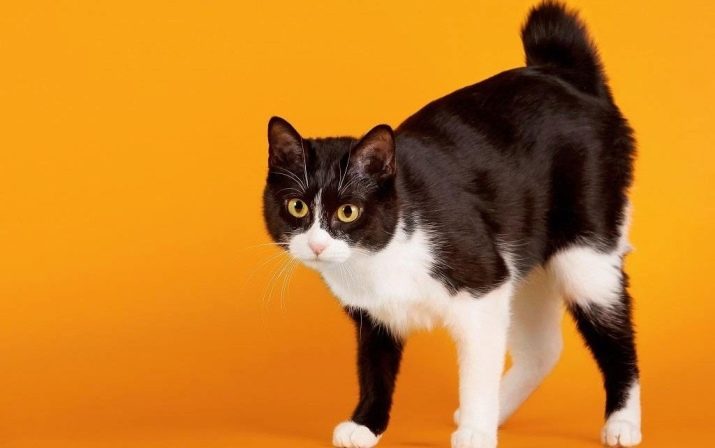
It is generally accepted that the breed is the result of a natural mutation in which a person did not take part.
That is why Japanese cats stand out for their good health and do not have any congenital or genetic diseases.
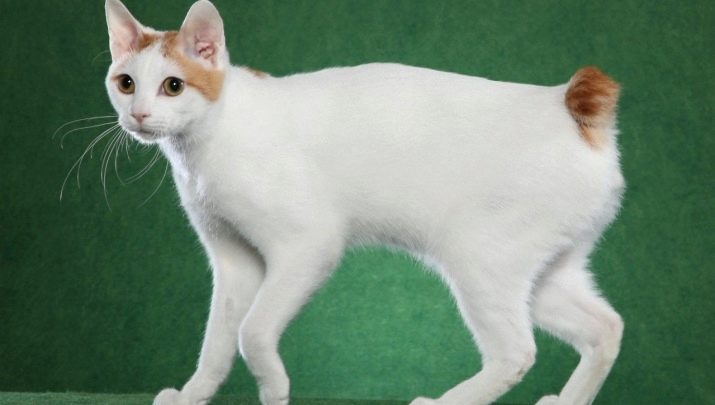
It is worth noting that each individual of this breed will have a tail unique in its structure, the type of curl of the vertebrae and fluffiness. However, experts divide animals into 2 categories:
- animals with a chrysanthemum tail;
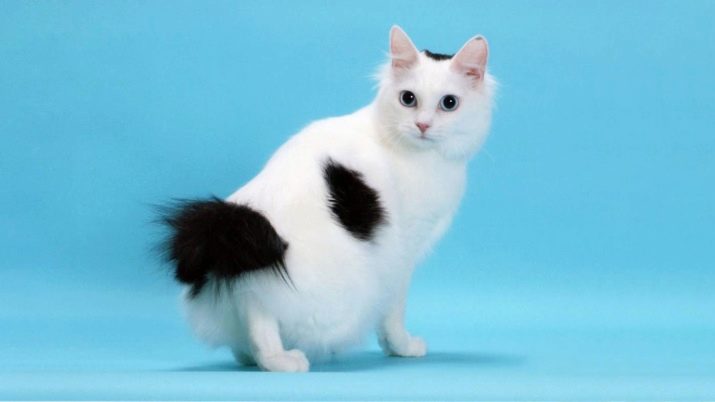
- cats with a spiral tail.
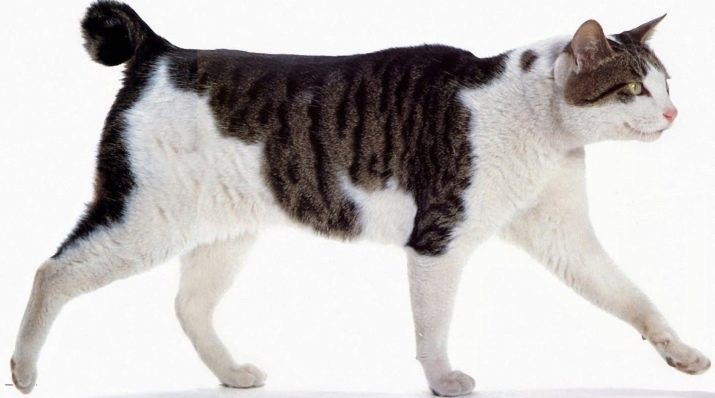
In the first case, it is located in cats in the form of a ring, while the hair on the tail will be fluffy, which gives the curled tail the shape of a bud or pompom. The coiled tails of bobtails close in a circle, the tail may have several bends-rings. As a rule, it fits more closely to the back of the animal, which visually reduces its size.
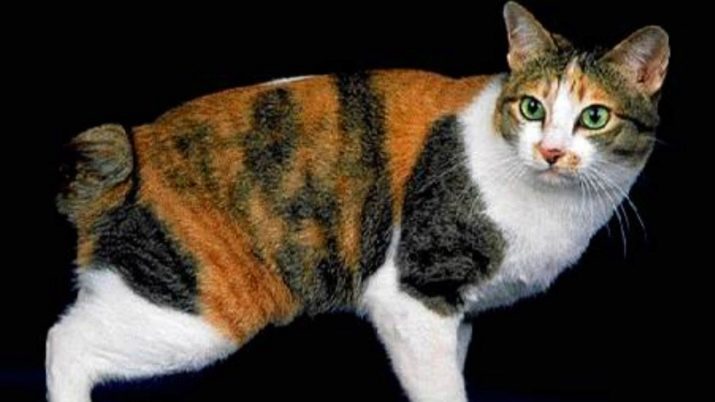
The breed has distinctive features that confirm the purebredness of the animal.
- Cats and cats stand out for their slim and fit body. The average weight of a Japanese bobtail is 3-4 kilograms.
- The head will have a triangular shape, while sharp corners and bends on it should not be present. The muzzle is slightly extended forward, with well-defined cheekbones, rounded but taut cheeks and a slightly elongated nose.
- The ears of the Asian cat breed will be large. At the base, they expand, at the ends they are rounded, set widely.
- Eyes are considered no less expressive in bobtails. They will be oval, but not convex. Any color of the pupils is allowed.
- The limbs are long, while the paws will be oval.
- Wool without dense undercoat, mostly short. Males can be of different colors.

It should be noted that heterochromia is characteristic of the Japanese Bobtail breed, which is manifested by pupils of different colors in one individual. It is very common to meet cats with one yellow eye, while the other will be blue.
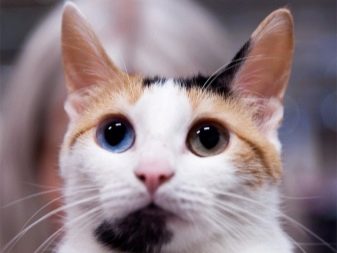
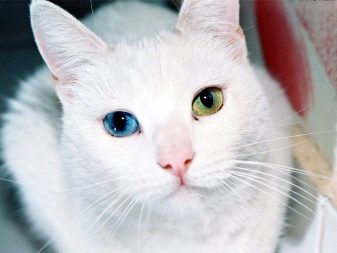
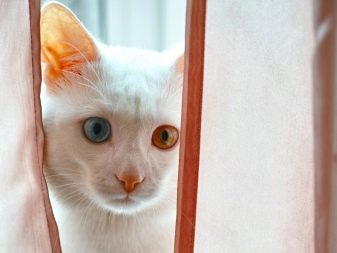

The lifespan of Asian cats varies between 12-15 years, but this figure largely depends on the conditions of the animal.

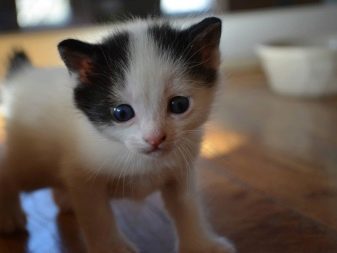
Character traits
Before purchasing cats of any breed, it is imperative to study the features of the habits and disposition of the animal you like. As for Japanese bobtails, such a pet will not be able to get along with a sedentary owner who prefers passive rest.
Cats are very playful and mobile, and animals retain this quality throughout their lives. It will be interesting for pets to conquer the peaks, jump and run a lot, in addition, tailless representatives of the feline family have a highly developed hunting instinct.
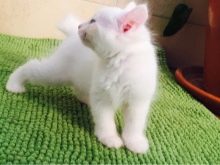
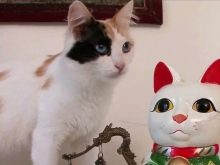
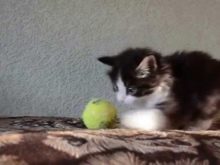
Owners of such animals should take into account the active and playful lifestyle and nature of cats, therefore, for them it is recommended to provide maximum free space for movement, as well as purchase toys, ladders and descents for the cat.
Since even a domesticated cat will not lose the instincts of a hunter, it is worth watching the windows so that the bobtail inadvertently does not fall out of the house, becoming interested in the bird outside the window.

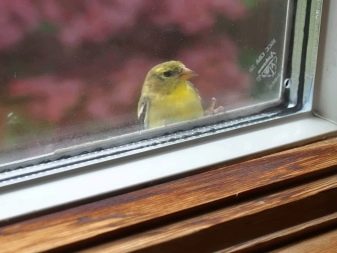
In addition to a pronounced interest in birds, fish and small rodents that can become prey for a cat, an Asian cat stands out for such a character trait as thrift, so she should have several personal beds in her house, from which the animal will have a good view of the entire room. for control. In addition, cats and cats need a private space for privacy, where no one will disturb the pet.
Another feature of the character of Japanese bobtails is a rather jealous attitude towards other pets in the house.If the breeder does not confine himself to one cat in the house, then regular fights between animals in the light of rivalry among themselves are not excluded. A similar situation can develop with dogs.
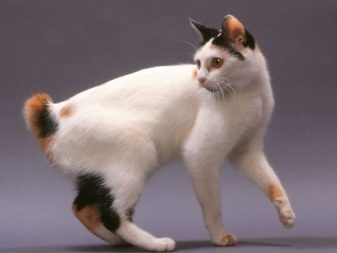

However, cats contact strangers with a high degree of endurance and tolerance, and bobtails also respond adequately and without aggression to babies and children.
Asian cats quickly adopt bad habits from humans and other animals, therefore such a pet is recommended to be brought up from an early age.
These animals have special love and devotion for their owner, therefore they very often take an active part in his household chores, sometimes imitating his daily actions.
And also bobtails are very curious and intelligent, so the breeder is able to teach the animals simple commands, the main thing is to train them in the manner of a game.
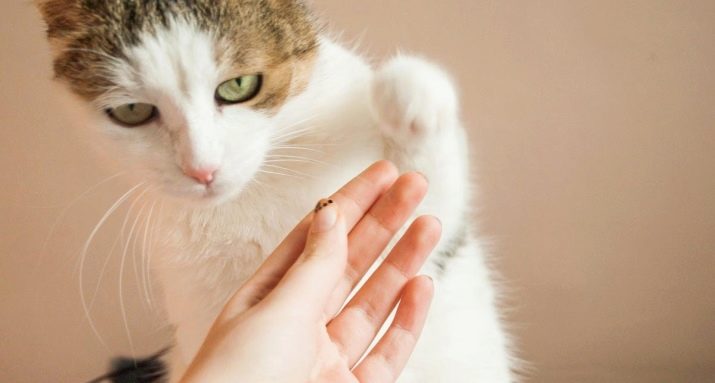
Color options
Today, experts do not cull individuals by wool length, therefore, you can find the following types of Japanese bobtails:
- long-haired;
- semi-long-haired;
- shorthaired.
The latter option is the most common. The animal's coat is silky and soft; a woolen layer may be present on the hind limbs.
Today, the following colors of Japanese bobtails are common:
- bicolor;
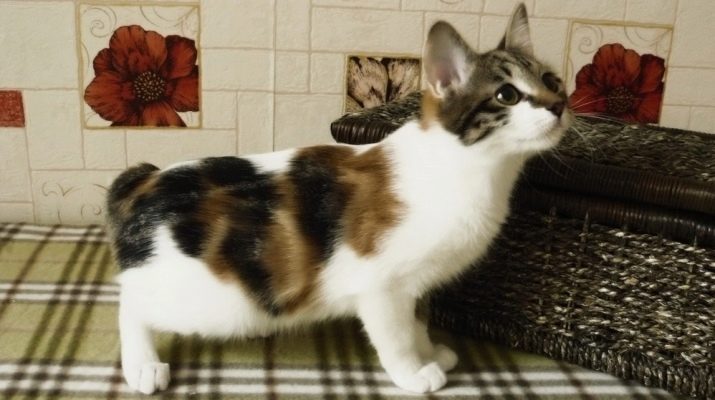
- calico.
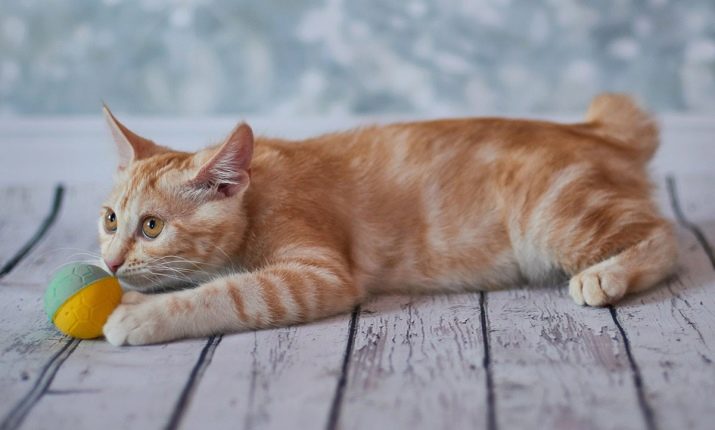
The latter type of color suggests the presence of stripes and spots on the coat with clear boundaries. Most often, there are white cats with red or black blotches on the coat. In this case, red and black will be present on the head, tail and ears.
There is some rejection by color - so, purple and chocolate colors are considered unacceptable for Japanese bobtails, and purebred representatives of the breed cannot have an Abyssinian coat color.
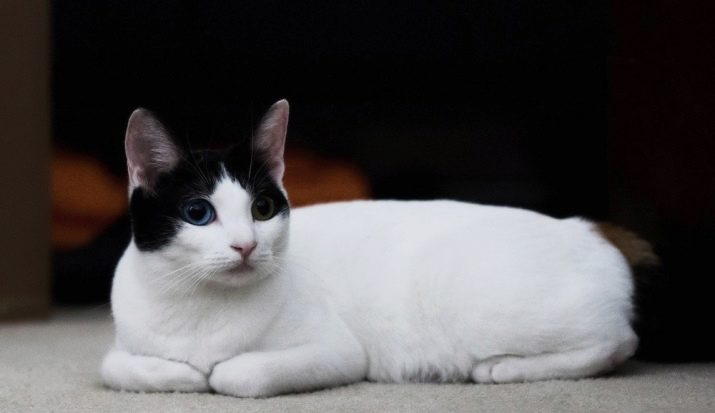
Monochrome bobtails are very much appreciated, as well as tricolor cats with predominantly dark colors.
Conditions of detention
Breeders of Japanese bobtails are not required to provide animals with any specific housing conditions. Pets stand out for their independence, so they take good care of themselves from a young age. Grooming is reduced to weekly brushing the cat with a rubberized brush. During molting, you can do it 2 times more often. Combing will be needed mainly for long-haired varieties of the breed.
In the off-season, during the wool change period, you can use a special rubberized glove to remove unnecessary lint. It is worth bathing cats only in case of emergency, if the pet is heavily smeared in something.
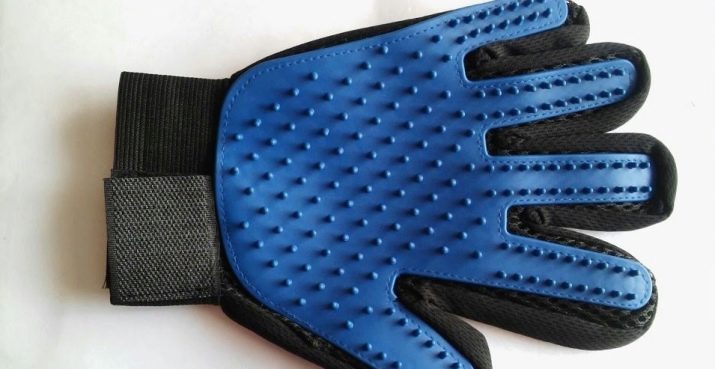
A feature of Japanese bobtails is sensitivity to a decrease in indoor temperature, since animals do not have a natural undercoat, they can freeze and even catch a cold. Therefore, the breeder should maintain room temperature in the home.
Since cats have rather large ears, they will need to be cleaned at least once a week. Hygiene procedures should be carried out with a damp cotton pad. And also, the owner of an Asian cat must monitor the cleanliness and health of the eyes of the animal, since in the light of their large size, the organs of vision become a forced target for dust and other contaminants that can provoke inflammatory processes of the organs of vision.
Bobtail eye care is reduced to the daily removal of any secretions at the corners of the eyes with a damp swab or rag, in addition to boiled water, it is not recommended to use other means.

Caring for a cat at home will require the breeder to pay attention to the animal's claws, since they grow back rather quickly, can turn inward, thereby causing discomfort to the cat while walking.
Feeding
Japanese bobtails do not require the selection of any specialized food, so they can be fed with ordinary natural food with the obligatory inclusion of lean meats in the diet. A third of the cat's daily menu will be devoted to grains and vegetables, which the pet's body needs to replenish its carbohydrate and dietary fiber reserves.
Kittens should be fed 3-4 times a day, it is recommended to transfer an adult cat to two meals a day.
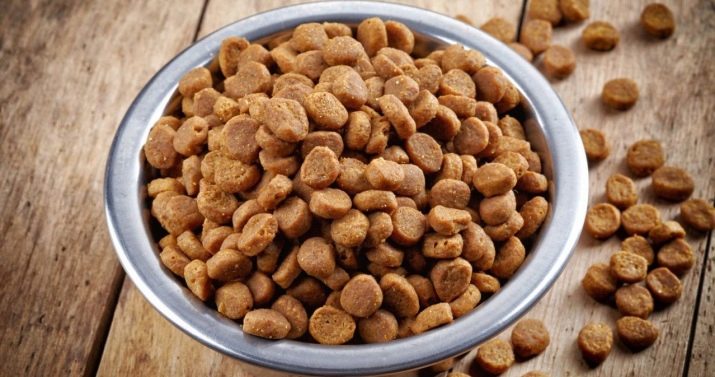
If the option of natural food for bobtails is chosen, then the breeder should offer the animal eggs, sea fish, sour cream and dairy products, meat offal.
Specialized industrial feed for the breed is not produced, therefore dry and canned options are allowed to be selected taking into account the length of the animal's coat, as well as special conditions, such as pregnancy or castration... According to the owners' feedback, the premium food will be suitable for bobtails.
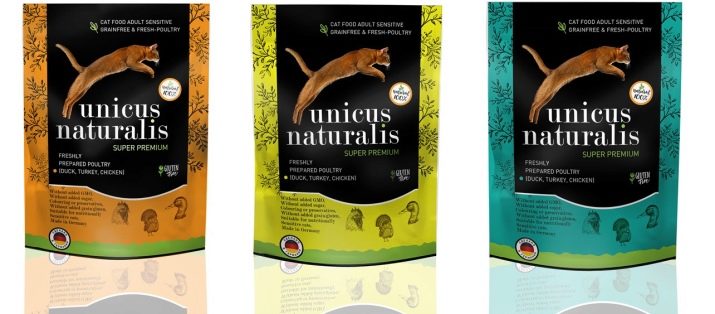
Breeding
To get purebred offspring, only Japanese Bobtail animals should be crossed. As a rule, female animals will be ready for mating at the age of 1.5-2 years, after they have passed 2-3 estrus. It is not recommended to use animals for mating earlier than the due date, since there is a risk of underdeveloped kittens being born. Females can give birth no more than once or twice a year. As for cats, they will be ready to mate at about the same age as cats.
Usually in a litter, bobtails have 2-4 kittens, culling in the case of crossing purebred animals has a fairly minimal percentage.
Kittens are born strong and grow rather quickly. It is allowed to wean from the mother and give animals to new owners when they reach 3-4 months.
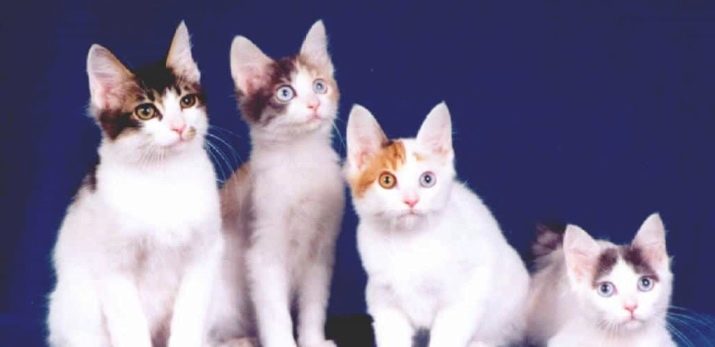
Pets that are not planned to be used for offspring are best castrated or sterilized. The optimal age of the animal for such operations will be 10-12 months. For females, it is important to sterilize before two years of age.
More information about this cat can be found in the video below.


























